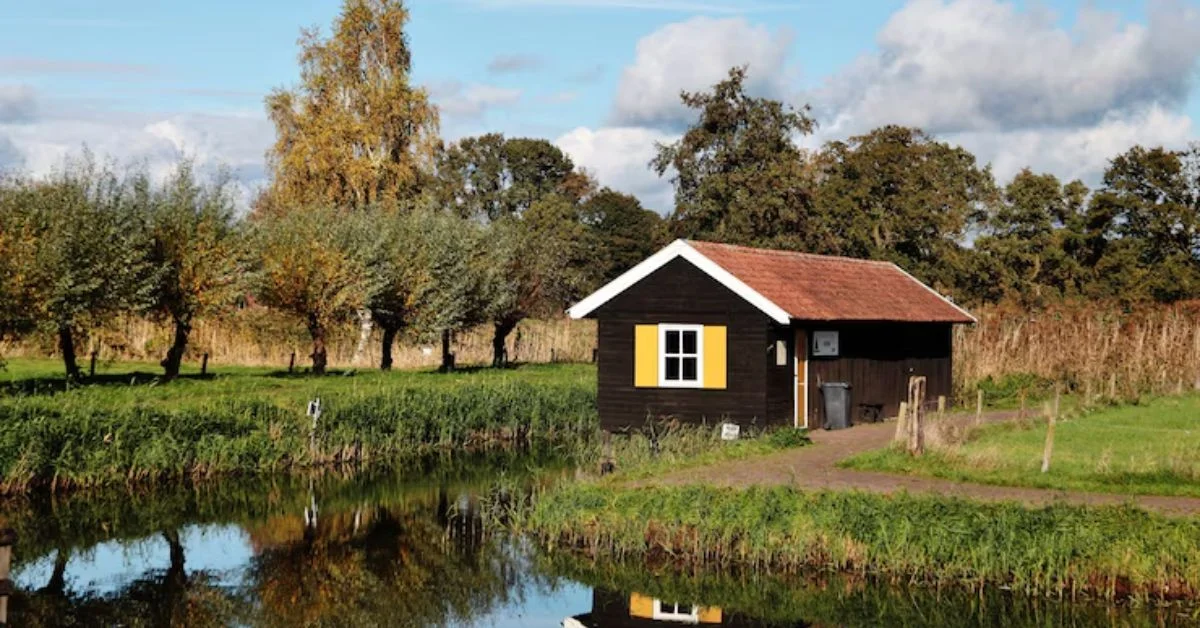Garfield Township is more than just a pin on a map—it’s a living example of small-town America navigating the pressures of growth, identity, and community integrity. Whether you’re a resident, prospective homebuyer, researcher, or simply curious about local governance and rural development in the U.S., understanding what defines a township like Garfield offers valuable insight into the workings of everyday civic life and the nuanced challenges small communities face.
This article explores Garfield Township’s origins, demographics, government structure, environmental footprint, socio-economic dynamics, and the often invisible mechanisms that hold it together. It goes beyond surface-level facts to provide a textured view of how townships like Garfield are responding to the evolving expectations of 21st-century rural life—while trying to preserve the heart of what made them strong in the first place.
Understanding the Township Model
Before diving into Garfield Township specifically, it helps to understand the concept of a township in the American context.
A township is a subdivision of a county with its own local government. These entities are most common in states like Michigan, Ohio, Pennsylvania, and Illinois. Their responsibilities typically include:
- Road maintenance
- Property tax assessment
- Zoning and planning
- Emergency services coordination
- Parks and recreational services
Townships represent a hybrid model of governance—large enough to manage localized infrastructure and services, but small enough to maintain a direct connection to their residents.
A Closer Look at Garfield Township: One Name, Many Places
Interestingly, “Garfield Township” is a name shared by several townships across multiple states, including Michigan, Iowa, Minnesota, Nebraska, and Kansas. For the sake of clarity and relevance, we will focus primarily on Garfield Township, Michigan—a particularly emblematic example of what rural governance and identity look like today. However, the broader themes discussed here apply to similarly structured townships nationwide.
Garfield Township, Michigan (specifically in Grand Traverse County), has emerged as one of the more developed townships bearing the name. What once was largely rural farmland has, over the last few decades, become a mix of suburban housing, commercial zones, and protected natural land.
Historical Context: Agricultural Roots and Civic Pride
Garfield Township, like many townships in the Upper Midwest, was founded during the 19th-century westward expansion. Settlers were drawn by fertile land, access to timber, and later, proximity to growing rail networks. Agriculture and small-scale manufacturing formed the backbone of the early local economy.
As communities formalized, so too did governance structures. Township boards were established, land was surveyed, and local institutions like schools, churches, and fire departments were born. The name “Garfield” itself is believed to honor President James A. Garfield, the 20th President of the United States, reflecting a post-Civil War era tendency to commemorate national figures in newly settled areas.
Governance and Community Structure
Garfield Township operates under a township board system, typically consisting of:
- A Township Supervisor
- A Clerk
- A Treasurer
- Two or more Trustees
These officials are elected by township residents and are responsible for decision-making on budgets, development projects, and community services. This local democracy is a vital element of township identity—citizens often attend public meetings, voice concerns, and vote on community issues with a level of proximity rarely seen in larger cities.
Notably, Garfield Township also has its own zoning ordinances. This means it holds authority over how land can be used—commercial vs. residential, agricultural vs. conservation—shaping not just policy but the physical character of the township itself.
Demographics and Growth Patterns
The population of Garfield Township has steadily grown, driven by a combination of urban spillover, scenic beauty, and a relatively affordable cost of living compared to metro areas. The demographic makeup typically reflects a predominantly white population, with small but growing communities of other racial and ethnic groups.
Key demographic trends include:
- Aging population: Like much of rural America, Garfield is seeing an increase in residents over 55, many of whom are retirees.
- Family-centric households: Schools and family services play a central role in community life.
- Educational attainment: High school graduation rates are strong, with a moderate percentage of college-educated residents.
Recent years have seen a slight uptick in young professionals and remote workers choosing Garfield for its lifestyle appeal—balancing tranquility with accessibility to urban amenities.
Land Use: A Balancing Act
The township’s land is a patchwork of zoning categories:
- Residential zones: Ranging from single-family homes to multi-unit complexes.
- Commercial corridors: Retail, service businesses, and restaurants cluster along major roadways.
- Agricultural parcels: These are still maintained in outer areas and valued for heritage and food production.
- Natural reserves: Parks, wetlands, and forests protected for environmental preservation and public use.
This variety reflects ongoing debates in township planning. Should Garfield embrace suburban growth or protect its rural roots? Should zoning favor economic development or environmental sustainability?
The township’s master plans and citizen advisory boards continually engage with these questions. The result is a community in tension, but also in thoughtful conversation with itself.
Education and Youth Services
Garfield Township falls under the jurisdiction of regional public school districts, and while it doesn’t operate its own school system, it actively supports educational initiatives. Public libraries, STEM programs, and recreational youth leagues are prevalent.
More importantly, the township plays a role in land-use decisions affecting schools—such as approving sites for new buildings or funding community-school partnerships.
Environmental Stewardship and Sustainability
One of the strengths of Garfield Township is its commitment to environmental preservation. The township includes several public nature preserves, recreational trails, and protected wetlands. These areas are often integrated into township planning efforts and serve dual purposes:
- Conservation: Preserving ecosystems, wildlife corridors, and clean water sources.
- Recreation: Providing space for hiking, biking, fishing, and community events.
Climate adaptation is becoming a focus. The township is exploring options like green infrastructure, water management upgrades, and energy-efficient municipal buildings to ensure resilience in the face of environmental change.
Economic Development: Local and Resilient
The township’s economy is deeply local. Small businesses, healthcare services, construction, and light manufacturing form its core. While it doesn’t host large-scale industry, Garfield’s strategic location near larger urban centers makes it a hub for:
- Remote work professionals
- Tourism and seasonal businesses
- Homegrown entrepreneurs
Economic development is guided by a community-first principle. Township leadership often partners with regional development councils to secure grants, improve internet access, and support workforce development.
Civic Engagement and Community Life
Perhaps Garfield Township’s greatest asset is its people. Volunteerism, civic clubs, faith communities, and farmers’ markets all contribute to a strong local culture.
Events like township clean-up days, Memorial Day parades, or fall harvest festivals are more than just celebrations—they are anchor points of community cohesion. And with the proliferation of digital tools, township board meetings are now livestreamed, allowing greater transparency and participation.
Public Safety and Infrastructure
Garfield Township collaborates with county and regional agencies for policing, emergency response, and firefighting. Roads, water lines, and public facilities are managed with modest but focused funding. Infrastructure improvement is ongoing, with attention given to:
- Snow removal and seasonal maintenance
- Stormwater systems
- Broadband expansion
These basic services, while often overlooked, are essential to the township’s stability and appeal.
Challenges Facing Garfield Township
Like many rural and semi-rural communities, Garfield faces a set of persistent challenges:
- Affordable housing: Rising land costs and limited rental stock put pressure on younger or lower-income residents.
- Growth management: Balancing development with preservation remains contentious.
- Revenue limitations: Small tax bases mean that even small budget overruns can affect public services.
- Political polarization: Local elections are increasingly affected by national ideologies, sometimes undermining practical governance.
Addressing these issues requires a combination of policy creativity, community consensus, and regional cooperation.
Conclusion: Garfield Township as a Microcosm of Rural America
Garfield Township is, in many ways, a mirror of America’s changing small-town landscape. It is grounded in tradition yet open to innovation. It grapples with questions of identity, sustainability, and inclusion—while trying to meet the day-to-day needs of its residents.
It stands as proof that meaningful governance doesn’t only happen in city halls or on Capitol Hill. It happens in township meetings, zoning boards, and the quiet resolve of residents who care deeply about where they live.
Garfield Township may not always make headlines, but its journey is worth paying attention to. In the shifting story of modern America, these are the places where the plot is thickening—and the next chapter is still being written.
FAQs
1. Where is Garfield Township located?
There are several Garfield Townships across the U.S., but one of the most notable is in Grand Traverse County, Michigan. This article primarily focuses on that location, known for its mix of suburban and rural characteristics.
2. What services does Garfield Township provide?
The township handles road maintenance, zoning, property assessments, parks, and coordination with police and emergency services. Local governance also includes planning and development oversight.
3. Is Garfield Township a good place to live?
Yes, especially for those seeking a balance of nature, community, and manageable growth. It offers a safe, family-friendly environment with access to amenities and recreational spaces.
4. How is Garfield Township handling growth and development?
Through careful zoning, community master plans, and citizen engagement, the township works to manage development while preserving its rural and natural character.
5. Can I attend Garfield Township meetings or participate in decisions?
Absolutely. Township meetings are public and often livestreamed. Residents are encouraged to voice their opinions, vote on issues, and even run for office.
For more information, click here.









